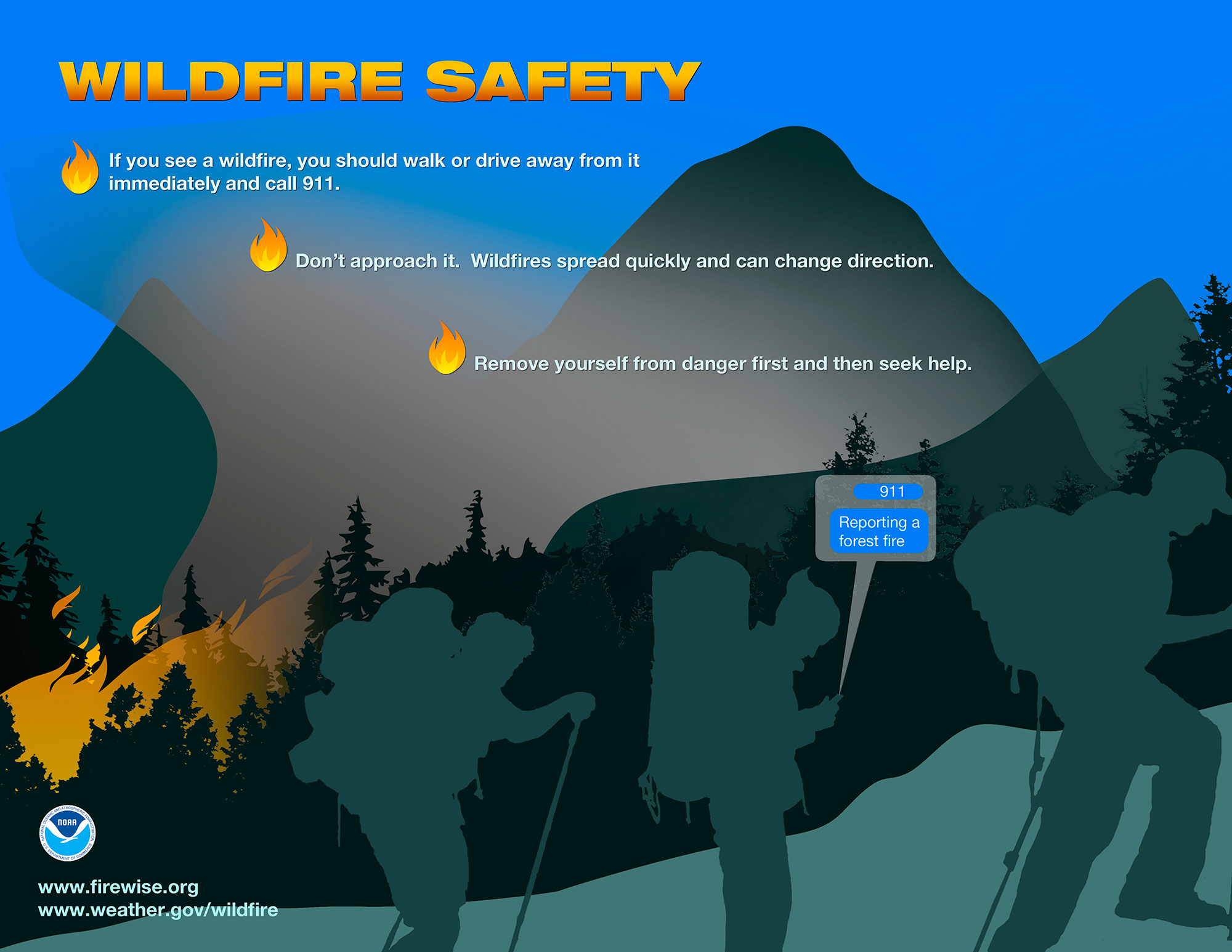News Releases
https://icf.mediaroom.com/index.php?s=20300
WASHINGTON, Sept. 8, 2015 /PRNewswire/ -- As part of National Preparedness Month, FEMA will be sending journalists information each week in September to help spread the word about how people and communities can better prepare for specific disasters before they strike.
As we mentioned in the FEMA news release dated September 1, 2015, each week will focus on a different type of disaster. The second week highlights wildfire and the steps people and communities should take to prepare for wildfires before they threaten.
Below are materials and information you can share with your viewers and readers. Should you need additional information or would like to speak with someone at FEMA, please contact the FEMA News Desk at (202) 646-3272.
The National Climate Assessment: Climate Change Impacts in the United States [1] concludes that warmer and drier conditions have already contributed to increasing wildfire events across the western United States, and future increases are projected in some regions. Already this year, there have been over 44,000 wildfires that have damaged or destroyed almost 8.5 million acres.[2] Long periods of record high temperatures are associated with droughts that contribute to dry conditions and drive wildfires in some areas.
Experience the interactive Multimedia News Release here: http://www.multivu.com/players/English/7607931-fema-national-prepareathon/
USDA Secretary Vilsack recently stated, "This year, we are experiencing yet another devastating wildfire season, particularly in the drought-ravaged West. Climate change, drought, fuel buildup, insects and disease are increasing the severity of unprecedented wildfire in America's forests and rangelands, which impacts the safety of people, homes and communities. Development close to forests has also increased the threat to property, with more than 46 million homes in the United States, or about 40 percent of our nation's housing, potentially at risk from wildfire."[3]
The community as a whole will need to adapt to changing risks, including the impacts of climate change, as we work together to build greater resilience across the Nation. Five steps to begin preparing for a wildfire include:
- Protect your property by creating defensible space and using fire-resistant materials. Reduce the amount of material that can burn easily in and around your home or business by clearing away debris and other flammable materials, and using fire-resistant materials for landscaping and construction.
- Know how to stay informed. Receiving timely information about weather conditions or other emergency events can make all the difference in knowing when to take action to be safe. The National Weather Service issues a fire weather warning or red flag when fire danger exists and weather patterns that support wildfires are either occurring or expected to occur within 24 hours.
- Know your evacuation routes; plan your transportation and a place to stay. Know your community's local evacuation plan and identify several escape routes for your location in case roads are blocked. When a wildfire threatens your area, the best action to protect yourself and your family is to evacuate early to avoid being trapped. If there is smoke, drive carefully because visibility may be reduced.
- Practice how you will communicate with family members. In a dangerous situation, your first thoughts will be the safety of your family and friends. In case you are not together when authorities issue a fire weather watch or fire weather/red flag warning, practice how you will communicate with each other. Remember that sending a text message is often faster than making a phone call. Visit ready.gov/prepare for easy to use resources on developing a family emergency communication plan.
- Store supplies so you can grab them quickly if you need to evacuate; know in advance what else you will need to take. Take time now to make a list of the things you would need or want to take with you if you had to leave your home quickly. Store the basic emergency supplies in a "Go Bag" or other container. Be ready to grab other essential items quickly before leaving.
According to the Centers for Disease Control and Prevention, wildfire smoke contains particulate matter, carbon monoxide, and other compounds, which can significantly reduce air quality, both locally and in areas downwind of fires. Smoke exposure increases respiratory and cardiovascular hospitalizations, emergency room visits and medication for asthma, bronchitis, chest pain, and other ailments. It has been associated with hundreds of thousands of deaths globally each year. Future climate change is projected to increase wildfire risks and associated emissions, with harmful impacts on health.[4]
Media outlets may also link to this guide on your website to provide your viewers and readers with more information about how to prepare for a wildfire.
[1] Melillo, Jerry M., Terese (T.C.) Richmond, and Gary W. Yohe, Eds., 2014: Highlights of Climate Change Impacts in the United States: The Third National Climate Assessment. U.S. Global Change Research Program, 148 pp.
[2] As reported by the National Interagency Fire Center, http://www.nifc.gov/fireInfo/nfn.htm
[3] Statement from Secretary Tom Vilsack on Ongoing Devastating Wildfire Season, Aug. 20, 2015 (available on the Internet at: http://www.usda.gov/wps/portal/usda/usdahome?contentid=2015/08/0236.xml&contentidonly=true)
[4] Centers for Disease Control and Prevention. http://www.cdc.gov/climateandhealth/effects/wildfires.htm


To view the original version on PR Newswire, visit:http://www.prnewswire.com/news-releases/wildfire-safety-tips-300138992.html
SOURCE Federal Emergency Management Agency (FEMA)
